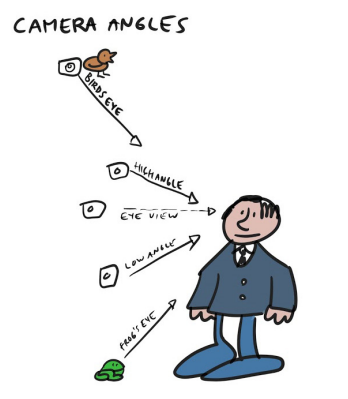Method description & history
Forms of digital storytelling have been developed especially for the field of cultural youth work, because the aim usually includes dialogue building, processing and seeking one’s own identity, or encouraging active participation in society.
Nowadays, communication is more based on visualisation than plain text or words. Videos are more common in everyday communication. Visual signs, filtered photos, content-wise memes and short edited videos are the new multi-cultural and universal language of youngsters.
These trends should be taken into account when planning learning processes and when offering training in personal skills. The One-minute-movie workshop takes advantage of the trends and skills of youngsters by opening the door for creativity and artistic visions.
One Minute Movie is basically a strictly defined structure for a workshop aimed at producing short amateur videos with a specific theme in a pretty short time. The starting points are some theories about movie making, and a short practice with camera angles, movements and image sizes. Then, participants are introduced to basic principles of storytelling and scriptwriting.
Usually participants prepare themes and start writing a synopsis in small groups of 3-5 participants. The next step is writing and drawing the storyboard and producing more detailed scripts for the movie. The following phase is the actual production, filming and then editing. The grand finale is watching the film to- gether and sharing feedback.
The seeds of the One Minute Movie workshops are found in Digital Storytelling. The method was developed within Humak University around 2005-2010, when video courses were offered for Erasmus Stu- dents. Mixed groups of international students had one day for filming. There was an obvious need for better structured and more intensive workshops for these multicultural groups, combining creativity, values, the power of expression and visual language.
One Minute Movie is an ideal method for creating common understanding within multicultural groups. It helps increase participation and strengthen group building in the modern way.
Why
The idea behind the ‘One-minute video story’ workshops is to use a simple and well-defined model for a video film as a tool of expression. It does this by utilising the basic elements of media, such as image, movement and sound. Video is a powerful medium of expression and very appealing. Participants are encouraged and inspired to experiment with an expressive tool that might be new to them. Videos are ever-present in our everyday lives. It is important to lower the technical and conceptual threshold for producing and publishing videos and films. The idea that ‘anyone can learn to create’ and produce ‘selfmade media’ is another starting point for the workshops.
Instructions for One-Minute-Movie
FILM TRAINING
Training begins by learning how to use the cameras. Participants learn about picture sizes, camera angles, movements and etc. The aim is to have each participant try shooting in turn and to point out how changing shot sizes affect the rhythm of the storytelling.
SCRIPTWRITING
The writing of stories begins by choosing the theme for the film e.g. addiction, social exclusion, loneliness and crises. Groups write a small synopsis of topics. Choosing the point of view is a crucial step in digital story-telling.
Groups then move on to write and draw a more detailed script, the story board. Each shot is drawn on a ready-made template. In order to keep to the time limit of one minute, the number of shots is limited to 12-15 with a max. duration of 4 sec. each.
SHOOTING THE VIDEO
The groups shoot the video. A successful work process is to have all group members participate. It is important to find suitable shooting locations in the local environment and to be careful to avoid background noise when recording the scenes and dialogues. When shooting indoors pay attention to ensuring sufficient lighting.
EDITING AND ADDING SOUNDS AND EFFECTS
Next, the groups need to go through the shots and to choose the ones suitable for the film. These are then transferred to the programme timeline in the preferred order. The selected shots are cut to the desired length. The films are converted into movie files and pub– lished. Participants must decide the level of publicity of the films.
Practical information
Time Required: 2 hours or more. The method is flexible for scaling.
How many people involved: 3-5 groups of 3-4 people
Target: Multicultural groups or marginalised target groups who need an opportunity to be heard and seen.
Where: The method can be implemented in a venue with good lightning and quiet spaces; access to the outdoors is desirable.
Materials Required: Methods can be implemented with participants’ own devices (bring your own device or ‘BYOD’) or e.g. with iPads or equivalent.

Tips and tricks
- BYOD” didactics (‘Bring you own device’). Using the participant’s own equipment, such as smartphones, tablets or video cameras (low-threshold technology) makes organising the workshop much easier and more accessible.
- The goal is not to produce high-quality artwork but, rather, to find an interactive platform to deal with topics.s.
- The aim is to have each individual participate in and commit to the process.

PROS
The one-minute-movie workshop could also work as a problem-solving method. The film may contain a distinct turning point and offer a solution to a problem, or alternative solutions, which can be discussed in the feedback discussion
- Groups from different social and cultural backgrounds bring different perspectives and make the workshops more interesting. Sometimes there are opportunities to reflect cultural sensitivity in these ‘happy cultural melting pots’.
- One-minute-movie workshops offer an experience of inclusion in a modern way.
- Self-made videos could be the so-called “untold stories” of oppressed people or those living in the margins.
- Videos can help us visualise social empower- ment or inclusion and give the participants the right to voice their own stories.
- The one-minute-movie process can also be used as a way to document other tools or methods. These combinations could be fruitful, benefiting all participants in the way they learn and apply tools on a deeper level and expanding opportu- nities for the inclusion of all participants in the process.
CONS:
- Time limitations are often the main challenge for the ‘One-minute video story’ workshops.s.
- Usually there is very limited time for discussions in the workshops.
- The method is based on technology and
- It is possible to overcome these limitations with clearly-structured workshops.
Combination with other methodologies
More about the menuscripting methods in general can be found in this chapter of our Toolbox.
Other methods useful to combine the One-Minute Movie with:
Digital Storytelling tutorial
Author
The methodological description is based on the text produced by Kari Keuru. Developing Youth Work Innovation. E-handbook. Project Future Labs. Erasmus+, KA2, 2019. Publication of Humak University of Applied Sciences, page 77.





